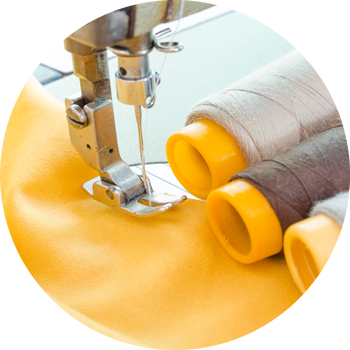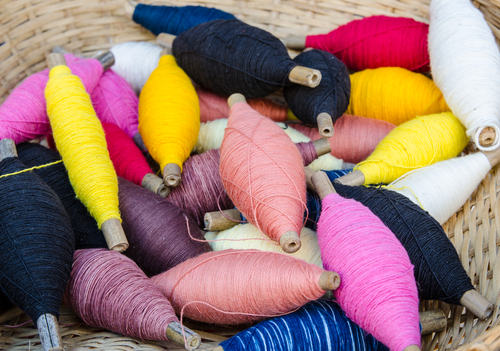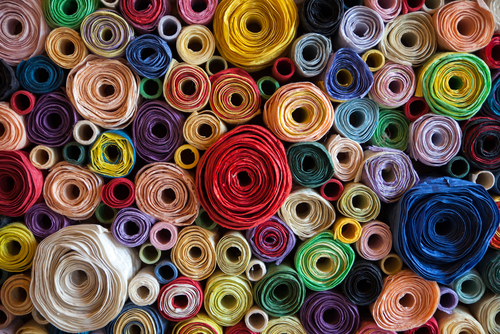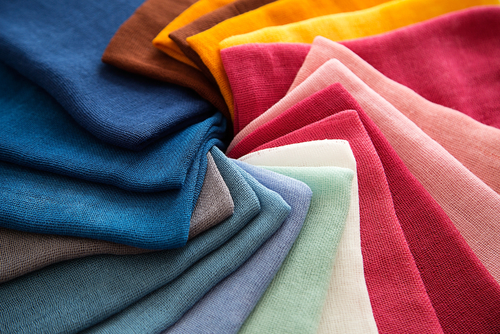Setting Up of a Garment Industry:
I have got many emails asking 'how to start garment business in small scale' and many other questions related to business start-up in garment industry. Most of the email senders seem completely new to garment manufacturing. I think this article will be helpful who are interested to started a garment factory in small scale.
Before starting any business everybody has to prepare a project plan. If you are really interested in starting a garment factory then you should have a business plan as in any other case. First of all you have to decide that what sort of garment you have to manufacture. Then you have to make some research about the Market and then you have to select the segment of market that you think you would target. Then you have to select some potential buyers and check their credibility in the market.
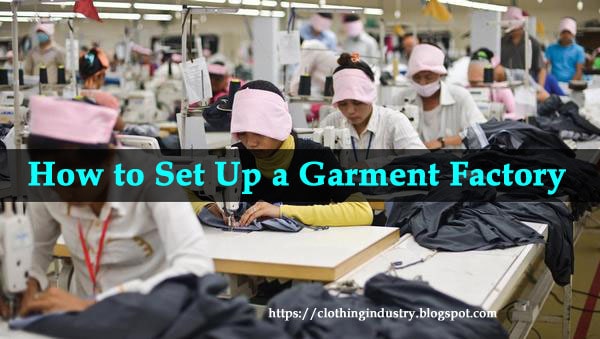 |
| Fig: Garment industry |
Basic requirements to set up a garment factory:
- Decide the product.
- Decide your budget.
- Make a list of machinery. (As per product and budget)
- Make a list of potential customers and start contacting them. An expert will guide you.
- Target market to sell. (Decide weather you wanna sell directly or job working)
- Target production as per sell and budget.
- Chose the right place, the place where already garment units are located. So you will get staff easily.
- Start the unit, it will take 2–3 months to set up. You need 1 experienced staff who can handle workers.
Besides the following factors to be considered while starting a new garment unit are discussed below.
Selecting appropriate product category:
Deciding product categorisation to be focussed on during set-up of a garment industry could play a crucial role. At the initial face of starting a garment unit, the various kinds of garments such as T-shirts, polo and woven products should not be considered at the same time and only one or two product profiles should be considered.
Estimation of production requirement:
It would be helpful to have an idea about quantity of garments that can be produced per day so that it would be helpful in future planning based on the budget and customer demand. This necessitates the process of determination of the production capability of an industry.
Plant loading:
Plant loading is defined as the allotment of workers or machines for future processing of an order by considering the sequence of processes as in a route sheet and the priority sequencing and utilisation of work centres. Loading establishes the volume of load every work centre should have in a forthcoming period which results in load schedules indicating the evaluation of labour and machine hours necessary to get the master production schedules with the available labour and machine hours in every planning schedule in the short term.
Capacity study:
A capacity study is the evaluation of a garment industry, manufacturing process, machine, or operator to estimate the maximum rate of production.
The objective of the capacity study is:
- To find-out the deviation between the actual rate of production to its capacity
- To evaluate the causes for lagging in the actual production
- To achieve the actual production closer to its actual capacity using proper methods and reducing the idle time
There are various types of capacity available for a factory:
- Maximum capacity – Number of hours available in a given time under normal conditions.
- Potential capacity – Maximum capacity adjusted for expected efficiency.
- Committed capacity – Total hours formerly allocated for production during a certain time period.
- Available capacity – The difference between committed and potential capacity is known as available capacity.
- Required capacity – It is garment SAM necessary to manufacture a specified volume in a certain period of time.
Calculation of capacity:
Consider the following cutting plan example:
The limitations on lay sizes are:
- Maximum height of lay = 15 plies
- Maximum length of lay = 4 garments marked
- Time for laying one fabric ply = 1 minute
- Marking time = 5 minutes
- Cutting time = 10 minutes
- Working hours = 8
Solution:
Plan the cutting lay out.
- Lay I – 25 Plies (Sizes – 16, 18, 12, 12)
- Lay II – 40 Plies (Sizes – 10, 14, 14, 12)
Lay I:
- Maximum number of garments in Lay I = 25 × 4 = 100
- Laying time for 25 plies = 25 minutes
- Laying time for one garment = 25/100 = 0.25 minute
- Marking time for one garment = 5/100 = 0.05 minute
- Cutting time for one garment = 10/100 = 0.10 minute
- Total processing time for Lay I = 25 + 5 + 10 = 40 minutes
- Total processing time per garment = 0.25 + 0.05 + 0.10 = 0.40 minute
Lay II:
- Maximum number of garments in Lay I = 40 × 4 = 160
- Laying time for 40 plies = 40 minutes
- Laying time for one garment = 40/160 = 0.25 minute
- Marking time for one garment = 5/160 = 0.03 minute
- Cutting time for one garment = 10/160 = 0.06 minute
- Total processing time for Lay II = 40 + 5 + 10 = 55 minutes
- Total processing time per garment = 0.25 + 0.03 + 0.06 = 0.34 minute
Capacity:
- Capacity/hour for Lay I = 60/0.40 = 150 garments
- Capacity/day for Lay I = 480/0.40 = 1200 garments
- Capacity/hour for Lay II = 60/0.34 = 176 garments
- Capacity/day for Lay II = 480/0.34 = 1412 garments
- Total time essential to complete the order = 40 + 55 = 95 minutes
Number of machines:
After deciding on the type of product and production capacity, the number of sewing machines and other machinery requirements could be calculated. Otherwise, it can be carried out conversely, that is, after deciding to set-up a factory for a specific number of machines as well as type of product, projected production per day can be determined.
Type of machines:
The succeeding process is to select the proper kinds of machines suitable for the production of garments as well as the number of machines to be purchased in each kind of machine. This step would be useful for estimating the capital investment in machines. Apart from the sewing machines, list other essential equipment such as pressing tables, spreading tables, boiler, generator, furnishings etc.
Raw materials requirement:
After selection of product category and machines, raw materials such as fabric and other accessories and trims to make the garment with their average consumption have to be listed. This would be helpful for preparing the budget on material sourcing.
Factory space requirement:
The space needed for setting up of machines, equipment and administrative centre has to be estimated. According to the estimation the factory layout could be planned.
Manpower requirement:
After setting up the machine and materials, the labour, the primary resources for a garment industry could be planned. The manpower calculation includes number of office staff, supervisors and workers. Further, an estimation has to be done for their salaries.
Project cost:
To determine the budget for setting up an apparel industry, one could prepare the cost of the project. For doing that, the assessment of total capital investment, EMI amount, salary for staff, workers’ wages and running costs have to be taken into consideration.
Internal process flow:
Plan out the detailed process flow for execution of an order. This will facilitate deciding what all the departments need to set up and plan to employ the people accordingly.
Supplier listing:
Finding out the good and reliable suppliers for fabrics, trims and other necessary items required to manufacture the garments is crucial for completion and dispatch of the orders in time.
References:
- Apparel Manufacturing Technology by T. Karthik, P. Ganesan, D. Gopalakrishnan
- https://www.expert-market.com
- https://www.quora.com/
- https://www.onlineclothingstudy.com

